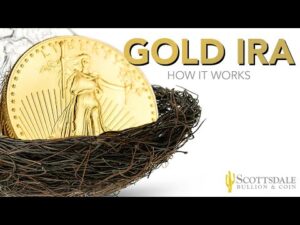Bitcoin has continually made waves in the financial world, with November 28 standing out as a significant date in its history. Both in 2013 and 2017, Bitcoin experienced remarkable surges to new all-time highs (ATHs) on this date, capturing global attention and investor excitement. As we approach November 28, 2024, the question arises: Can Bitcoin replicate its past performance and potentially soar beyond $100,000?
The Historic November 28 Milestones
November 28, 2013: Bitcoin achieved its first ATH by crossing the $1,000 mark. This milestone marked a rapid ascent driven by increasing awareness, adoption, and enthusiasm for Bitcoin's disruptive potential. While Bitcoin was still considered a niche asset at the time, surpassing $1,000 solidified its position as a significant player in the financial realm, akin to a modern-day gold rush.
November 28, 2017: Fast forward four years, and Bitcoin broke through the $10,000 barrier, a crucial psychological and market-defining moment. The 2017 rally was fueled by broader adoption, the Initial Coin Offering (ICO) craze, and growing interest from retail investors. By December of that year, Bitcoin's price had peaked close to $20,000, marking a remarkable period that left a lasting impact on the market.
The Significance of November 28: A Historical Perspective
The recurring importance of November 28 in Bitcoin's timeline is no coincidence. This date is intricately tied to Bitcoin's four-year halving cycle, where the block reward miners receive is halved. The initial halving took place on November 28, 2012, setting off a pattern that correlates with Bitcoin's price cycles. Halvings reduce the rate of new Bitcoin issuance, increasing scarcity and often triggering bullish price trends in the years that follow. The 2012 halving laid the groundwork for the 2013 ATH, while the 2016 halving set the stage for the 2017 bull run.
Anticipating November 28, 2024: What Lies Ahead?
Several factors contribute to the optimism surrounding the potential for a new ATH on November 28, 2024:
Post-Halving Momentum
Following previous halvings, Bitcoin has historically experienced significant price growth in the 12–18 months that follow. With the April 2024 halving now in the rearview mirror, the expected supply shock has already begun to impact the market. Early indicators point to a rising demand, setting the stage for a potential record-breaking rally as the year draws to a close.
Institutional Adoption On The Rise
Since 2017, major institutional players like BlackRock and Fidelity have entered the Bitcoin arena. The introduction of spot Bitcoin ETFs has injected substantial liquidity into the market, potentially driving prices to unprecedented heights. The year 2024 saw continued institutional interest and the introduction of new financial products, further fueling Bitcoin's adoption and price.
Geopolitical and Economic Influences
In a climate marked by inflation, currency devaluation, and banking uncertainties, Bitcoin's appeal as a store of value has grown stronger. Increased global adoption could amplify its upward trajectory, positioning Bitcoin as a hedge against economic instabilities. Recent geopolitical tensions and global economic policies may heighten investor interest in Bitcoin as a safe-haven asset.
Corporate Treasury Trends
Another notable trend in 2024 is the growing number of corporations adding Bitcoin to their treasury reserves. Leading companies across diverse sectors are diversifying their assets by incorporating Bitcoin into their treasury holdings. This shift not only enhances corporate financial strategies but also boosts Bitcoin demand, contributing to its upward price momentum. Corporate adoption serves as a significant validation of Bitcoin's long-term investment potential and value as a store of wealth.
Market Sentiment and Community Belief
Bitcoin's price performance is heavily influenced by narratives and investor sentiment. The desire to see Bitcoin reach $100,000 aligns with the prevalent optimism and excitement as November 28, 2024, draws near. Discussions on social media, technical analyses, and achieving psychological milestones all contribute to building momentum. The community's confidence in Bitcoin's potential plays a pivotal role in propelling its price forward.
Considerations and Potential Challenges
While the outlook appears promising, there are several challenges to consider on the path to reaching a $100,000 ATH by November 28, 2024:
- Macroeconomic Uncertainties: Global economic instability could impact investor confidence and market dynamics.
- Regulatory Hurdles: Increasing regulatory oversight and potential restrictions might impede Bitcoin's growth.
- Market Volatility: Bitcoin's inherent volatility means unforeseen market shifts could disrupt upward momentum.
- Limitations of Past Performance: Historical trends do not guarantee future outcomes, and the market remains unpredictable.
Will Bitcoin Make History Again?
The cyclical nature of Bitcoin's past performances on November 28 offers a glimpse into potential future trends. However, the continuation of the 2024 pattern remains uncertain. Achieving a $100,000 ATH would not only showcase Bitcoin's resilience but also reinforce its status as a global financial asset.
As November 28, 2024, approaches, one thing is certain: Bitcoin's journey is ongoing. Whether it reaches $100K or surpasses that mark, this date could once again mark a significant moment in the evolution of the world's premier digital currency.
What are your thoughts? Will Bitcoin scale new heights on November 28, 2024?
Frequently Asked Questions
What is a Precious Metal IRA (IRA)?
A precious metal IRA allows for you to diversify your retirement savings in gold, silver, palladium and iridium. These rare metals are often called “precious” as they are very difficult to find and highly valuable. These are excellent investments that will protect your wealth from inflation and economic instability.
Bullion is often used to refer to precious metals. Bullion refers simply to the physical metal.
Bullion can be purchased via a variety of channels including online sellers, large coin dealers, and grocery stores.
A precious metal IRA allows you to invest directly in bullion, rather than buying stock shares. This will ensure that you receive annual dividends.
Unlike regular IRAs, precious metal IRAs don't require paperwork or annual fees. Instead, you pay only a small percentage tax on your gains. Plus, you get free access to your funds whenever you want.
Who owns the gold in a Gold IRA?
The IRS considers gold owned by an individual to be “a type of money” and is subject taxation.
To be eligible for the tax-free status, you must possess at least $10,000 gold and have had it stored for at least five consecutive years.
Owning gold can also help protect against inflation and price volatility, but it doesn't make sense to hold gold if you're not going to use it.
If you plan to sell the gold one day, you will need to report its worth. This will affect how much capital gains tax you owe on cash you have invested.
Consult a financial advisor or accountant to determine your options.
What are some of the benefits of a gold IRA
An Individual Retirement Account (IRA) is the best way to put money towards retirement. You can withdraw it at any time, but it is tax-deferred. You have complete control over how much you take out each year. There are many types of IRAs. Some are better suited for people who want to save for college expenses. Others are designed for investors looking for higher returns. For example, Roth IRAs allow individuals to contribute after age 59 1/2 and pay taxes on any earnings at retirement. These earnings don't get taxed if they withdraw funds. So if you're planning to retire early, this type of account may make sense.
A gold IRA is similar to other IRAs because it allows you to invest money in various asset classes. Unlike a regular IRA where you pay taxes on gains, a gold IRA doesn't require you to worry about taxation while you wait to get them. This makes gold IRA accounts a great choice for those who want their money to be invested, not spent.
Another benefit to owning IRA gold is the ability to withdraw automatically. This eliminates the need to constantly make deposits. To make sure you don't miss any payments, you can also set up direct deductions.
Finally, the gold investment is among the most reliable. Because it isn’t tied to any specific country, gold’s value tends to stay stable. Even in times of economic turmoil gold prices tend to remain stable. Gold is a good option for protecting your savings from inflation.
How to Open a Precious Metal IRA?
First, decide if an Individual Retirement Account is right for you. If you do, you must open the account by completing Form 8606. Next, fill out Form 5204. This will determine the type of IRA that you are eligible for. This form should not be completed more than 60 days after the account is opened. Once this has been completed, you can begin investing. You could also opt to make a contribution directly from your paycheck by using payroll deduction.
For a Roth IRA you will need to complete Form 8903. Otherwise, it will be the same process as an ordinary IRA.
You'll need to meet specific requirements to qualify for a precious metals IRA. The IRS says you must be 18 years old and have earned income. You cannot earn more than $110,000 annually ($220,000 if married filing jointly) in any one tax year. And, you have to make contributions regularly. These rules apply to contributions made directly or through employer sponsorship.
You can use a precious metals IRA to invest in gold, silver, palladium, platinum, rhodium, or even platinum. However, you won't be able purchase physical bullion. You won't have the ability to trade stocks or bonds.
To invest directly in precious metals companies, you can also use precious metals IRA. This option is offered by some IRA providers.
However, investing in precious metals via an IRA has two serious drawbacks. First, they aren't as liquid than stocks and bonds. This makes them harder to sell when needed. Second, they don't generate dividends like stocks and bonds. Also, they don't generate dividends like stocks and bonds. You will eventually lose money rather than make it.
How do you withdraw from an IRA that holds precious metals?
First, determine if you would like to withdraw money directly from an IRA. Next, ensure you have enough cash on hand to pay any penalties or fees that could be associated with withdrawing funds.
If you are willing to pay a penalty for early withdrawal, you should consider opening a taxable brokerage account instead of an IRA. If you choose this option, you'll also need to consider taxes owed on the amount withdrawn.
Next, calculate how much money your IRA will allow you to withdraw. This calculation depends on several factors, including the age when you withdraw the money, how long you've owned the account, and whether you intend to continue contributing to your retirement plan.
Once you determine the percentage of your total saved money you want to convert into cash, then you need to choose which type IRA you will use. While traditional IRAs are tax-free, Roth IRAs can be withdrawn at any time after you reach 59 1/2. However, Roth IRAs will charge income taxes upfront and allow you to access your earnings later without additional taxes.
Once you have completed these calculations, you need to open your brokerage account. Many brokers offer signup bonuses or other promotions to encourage people to open accounts. It is better to open an account with a debit than a creditcard in order to avoid any unnecessary fees.
When it's time to make withdrawals from your precious-metal IRA, you'll need a place to keep your coins safe. Some storage areas will accept bullion, while others require you to purchase individual coins. Either way, you'll need to weigh the pros and cons of each before choosing one.
Because you don't have to store individual coins, bullion bars take up less space than other items. However, each coin will need to be counted individually. You can track their value by keeping individual coins.
Some prefer to keep their money in a vault. Others prefer to store their coins in a vault. Whichever method you choose, make sure you store your bullion safely so you can enjoy its benefits for years to come.
Can I purchase gold with my self directed IRA?
Although you can buy gold using your self-directed IRA account, you will need to open an account at a brokerage like TD Ameritrade. If you have an existing retirement account, you can transfer funds to another one.
The IRS allows individuals contributing up to $5.500 each ($6,500 if married, filing jointly) into a traditional IRA. Individuals are allowed to contribute $1,000 each ($2,000 if married or filing jointly) to a Roth IRA.
You might want to purchase physical bullion, rather than futures contracts if you are going to invest in gold. Futures contract are financial instruments that depend on the gold price. You can speculate on future prices, but not own the metal. However, physical bullion is real gold or silver bars you can hold in your hands.
Should You Purchase Gold?
Gold was considered a safety net for investors during times of economic turmoil in the past. However, today many people are turning away from traditional investments such as stocks and bonds and instead looking toward precious metals such as gold.
While gold prices have been rising in recent years they are still low relative to other commodities, such as silver and oil.
Experts believe this could change soon. They say that gold prices could rise dramatically with another global financial crisis.
They also note that gold is increasingly popular because of its perceived intrinsic value and potential return.
These are some things you should consider when considering gold investing.
- The first thing to do is assess whether you actually need the money you're putting aside for retirement. It is possible to save enough money to retire without investing in gold. That said, gold does provide an additional layer of protection when you reach retirement age.
- Second, be sure to understand your obligations before you purchase gold. Each offers varying levels of flexibility and security.
- Don't forget that gold does not offer the same safety level as a bank accounts. You may lose your gold coins and never be able to recover them.
If you are thinking of buying gold, do your research. If you already have gold, make sure you protect it.
Statistics
- Gold is considered a collectible, and profits from a sale are taxed at a maximum rate of 28 percent. (aarp.org)
- The price of gold jumped 131 percent from late 2007 to September 2011, when it hit a high of $1,921 an ounce, according to the World Gold Council. (aarp.org)
- If you take distributions before hitting 59.5, you'll owe a 10% penalty on the amount withdrawn. (lendedu.com)
- Instead, the economy improved, stocks rebounded, and gold plunged, losing 28 percent of its value in 2013. (aarp.org)
- Indeed, several financial advisers interviewed for this article suggest you invest 5 to 15 percent of your portfolio in gold, just in case. (aarp.org)
External Links
finance.yahoo.com
cftc.gov
investopedia.com
bbb.org
How To
The History of Gold as an Asset
From the ancient days to the early 20th Century, gold was a common currency. It was popular because of its purity, divisibility. uniformity. scarcity and beauty. Because of its intrinsic value, it was also widely traded. Different weights and measurements existed around the world, however, because there were not international standards to measure gold. For example, in England, one pound sterling was equal to 24 carats of silver; in France, one livre tournois was equal to 25 carats of gold; in Germany, one mark was equal to 28 carats of gold; etc.
In the 1860s, the United States began issuing American coins made up of 90% copper, 10% zinc, and 0.942 fine gold. The result was a decrease in foreign currency demand, which led to an increase in their price. At this point, the United States minted large amounts of gold coins, causing the price of gold to drop. Because the U.S. government had too much money coming into circulation, they needed to find a way to pay off some debt. To do so, they decided to sell some of the excess gold back to Europe.
Because most European countries did not trust the U.S. dollar, they started accepting gold as payment. However, after World War I, many European countries stopped taking gold and began using paper money instead. The price of gold has risen significantly since then. Even though gold's price fluctuates, it is still one of the most secure investments you could make.
—————————————————————————————————————————————————————————————–
By: Mark Mason
Title: Will Bitcoin Reach a New All-Time High on November 28, 2024?
Sourced From: bitcoinmagazine.com/markets/will-the-bitcoin-price-repeat-the-november-28-ath-pattern-of-2013-and-2017-in-2024
Published Date: Wed, 27 Nov 2024 20:26:13 GMT















